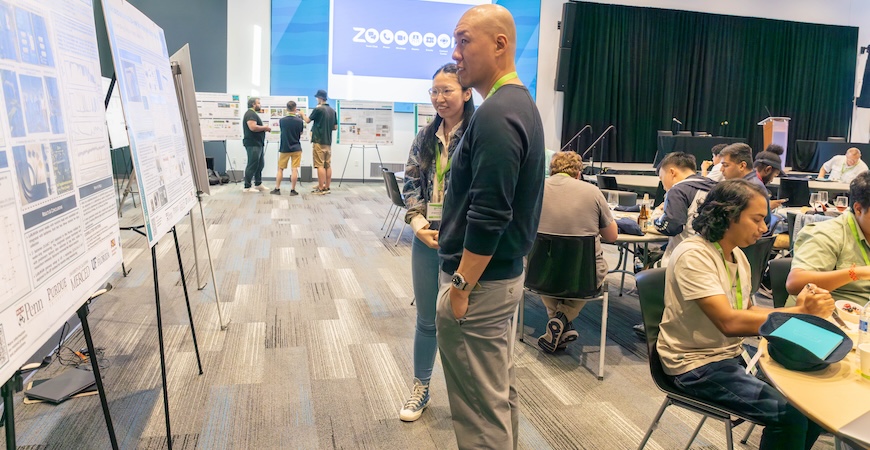
Agriculture is in a time of daunting challenge: The world's population is growing and climate change is impacting every area of the food supply chain.
Researchers from across the country who are working to address that challenge met at UC Merced this week. They are part of the Internet of Things for Ag, a National Science Foundation-funded research center uniting the University of Pennsylvania, UC Merced, Purdue University and the University of Florida.
The internet of things is a swiftly evolving "smart" network of devices, sensors and other objects that communicate and share data. Research in this domain is inherently multidisciplinary; this is reflected by the broad range of expertise by researchers and students associated with the center.
Projects in precision agriculture to address the challenges of food, energy and water security were highlighted during the annual retreat, which brought together faculty, students and postdoctoral researchers for four days on campus.
They toured a local farm and Dos Rios Reserve, California's newest state park, located on a restored floodplain just outside of Modesto. Panel discussions centered on water, pest management and stakeholder engagement. Poster sessions highlighted some of the projects.
Keynote speaker Shely Aronov talked about the process of turning cutting-edge science into a successful business. Aronov is co-founder of InnerPlant, a company backed by John Deere. InnerPlant creates crops that communicate through optical signals when they need water or are sick, so that only the crops that need it are treated.
"The biggest problem with pesticides is we don't apply them at the right time," Aronov said, noting that 30 percent of ag chemicals are wasted each year. "We can grow twice as much food with less chemicals."
But finding solutions to the problems posed by ag isn't by itself enough. The technology has to be cost-efficient and practical to use or it won't be adopted.
"The best tech doesn't win; the best strategy does," Aronov said. "How do we make it super easy for farmers? Friction kills any technology."
A panel of researchers discussed the possible precision tools to fight pests, including a global detection system that would use sensors to identify infestations early.
During the water discussion, researchers were joined by state officials to discuss the challenges of ensuring enough water is available through years of drought.
The last couple of years, California has been lucky in that regard, said Carolyn Cook, environmental program manager for the state Department of Food and Agriculture. With two wet years, reservoirs are filled to 118 percent of their normal capacity for this time of year.
"But we are always concerned about water usage in California," Cook said. "Groundwater basins are overdrafting."
The state offers incentive programs to farmers to encourage water efficiency and the reduction of greenhouse gas emissions. Measures such as converting from flood or sprinkler irrigation to micro irrigation and converting from gas to electric pumping are helping, she said.
Ricardo Ortega, general manager at Grasslands Water District, pointed out that California has lost 95 percent of its wetlands, making the remaining 5 percent vitally important.
"Our challenges are great," Ortega said. "There are always opportunities for more data, more efficiencies."
And it's not just limited to California, UC Merced associate civil and environmental engineering Professor Erin Hestir noted.
"Seventy percent of agriculture around the world is done in places that are water stressed," she said.




 Public Information Officer
Public Information Officer

